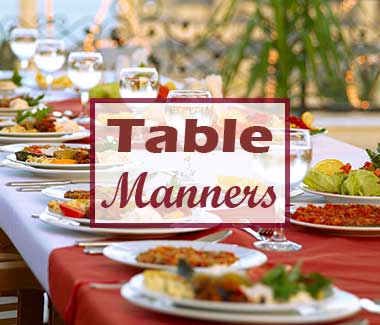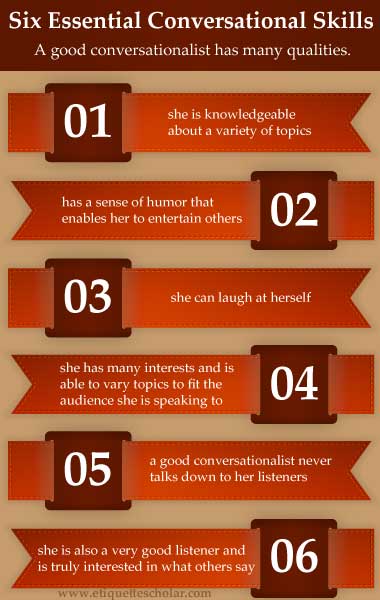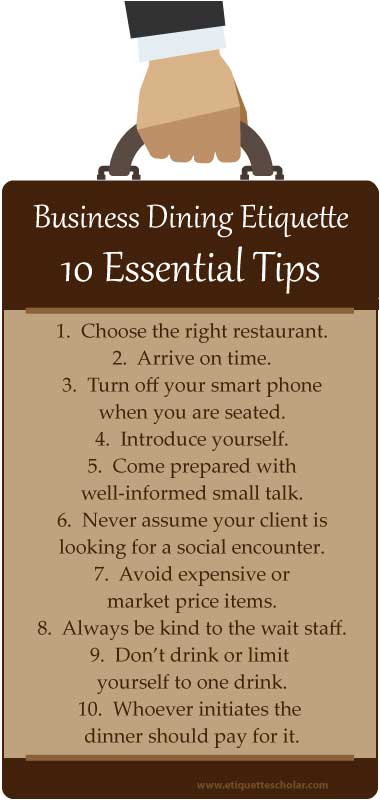Recruiting Event Etiquette
Drinks and Hors D'oeuvres
At a business reception drinks and hors d'oeuvres will more than likely be served - from a bar, buffet table, trays carried by waiters circulating around the room, or a combination thereof.
The Bar
If there is no true bar on the premises, bartenders will serve from a table, mixing drinks or pouring wine or beer as requested. Before ordering, be certain it's your turn; if you're in doubt, ask anyone who arrived at the bar or drinks table before you whether he or she is being served.
Waiters, too, will probably be passing through the room with trays, serving drinks. Don't make a beeline to the waiter to grab a glass or place your order; either wait patiently until the waiter comes your way or go stand in line at the drinks table or bar.
Keep the drink in your left hand so that your right is ready for handshakes.
When your glass is empty, look for a sideboard or tables where used glasses and plates are deposited; if you can't find one, ask a waiter or the bartender what to do with your glass, and then thank him when he more than likely takes it.
Do not tip the bartender unless there is a cash bar; in which case you will also pay for your drinks- an arrangement that's unlikely at a formal affair.
Passed-Tray Food Service
This may be the only food service, or it might be combined with self-service at a buffet table. Waiters circulate with trays of hors d'oeuvres, stopping to offer them to the guests. Finger foods and bite-sized hors d'oeuvres can usually be taken in your fingers and eaten directly. The server will also have small napkins that you can take to clean your fingers.
What do you do with food skewers or toothpicks after you've eaten an hors d'oeuvre? There's usually a small receptacle on the waiter's tray for used ones. If not, hold any items until you find a wastebasket. Don't place used items on the buffet table unless you see a waste receptacle there.
Another question: how do you juggle your drink, your plate, and shake hands all at the same time? Only with great difficulty, meaning a nod and a smile might have to substitute for a handshake. Standing close to a table could solve the problem, giving you a place to put your plate. Another option is to limit your intake of food, thus freeing up your hand. If you suspect that you'll be hungry and tempted to spend more time eating than mingling, have a snack before the event.
The Buffet Table
Hors d'oeuvres and canapes may be set out on a buffet table, with guests picking up plates and helping themselves to both finger foods and dishes that require a fork. Take small portions, and don't return for plateful after plateful; the food at this stage of the party takes a backseat to the people around you - not the other way around.
Food Stations
Food stations are smaller tables set up in strategic locations around the room. Each holds a different kind of food - ethnic specialties, perhaps, or all-vegetarian dishes. The idea behind this arrangement is to create several shorter lines instead of one long one.
Greetings and Courtesies
As a rule, punctuality is stressed more at a business affair than at a purely social one. For a business reception, arriving on time is not only expected - it's also the considerate and smart thing to do. Even if the event is a large reception at which guests' arrival times are fluid, it's still wise to arrive close (within ten to twenty minutes) to the time stated on the invitation.
Mingling
Don't be embarrassed to introduce yourself to someone. When another person is standing alone, this ritual poses no problem. Be sure to state your first and last names and, if necessary, ask others to state both of theirs. Etiquette says you shouldn't use a person's first name until he asks you to do so; at the same time, rigid adherence to this custom can make you look obsequious or pretentious. Take your cue from the person you're greeting. If he immediately calls you Jack, there may be an unspoken understanding that you're on a first-name basis. When in doubt test the waters by using Mr. or Ms.
Introducing yourself into a group conversation is slightly more difficult. Try to find a group that has at least one person whom you know. Approach with a smile on your face. Nod a greeting as you join the group and then, at the next small break in the conversation, introduce yourself: "Hi, I'm Jim Sanders from MNO." Remember attendees at business functions realize that strangers will be introducing themselves, so they're likely to be open to meeting you.
If you don't know anyone, approach the group, but be careful not to interrupt a person in mid-sentence. Instead wait and listen for a break or for the person to finish his or her thought. Then make eye contact with one of the group, reach out your hand, and introduce yourself: "Hi, I'm Sally Smith from LMN." Remember: At a business event people are encouraged to meet people, so it's an expected thing for a stranger to join a group.
Here are some other tips for mingling:
Put aside shoptalk of the critical or confidential kind. Keep your professional demeanor.
Avoid any political or religious issues that you feel passionate about.
Be an active listener. Stand up straight and show your interest by making eye contact and occasionally paraphrasing what the other person is saying to show you understand.
Keep your voice volume to a reasonable level.
Keep a close rein on drinking. Decide ahead of time what limits to put on drinking consumption. Then do not go over your limit no matter how festive the occasion or great the temptation.
Small Talk Tips
Become familiar with various topics. Read national newspapers and new magazines to become knowledgeable about world and national events. Read your local newspaper and tune in to local news as well, and peruse general-interest magazines and watch television news-magazine programs to keep up to speed on what's happening in entertainment and the arts. Know which sports teams are succeeding and which aren't. Make it your assignment to be a generalist and to know something about a lot of different things.
Ask people their opinions. Before you go to an event, list three or four questions you can ask at the start of a conversation. Always couch these questions in terms of asking a person for his or her opinion. Remember, people love to be asked their views on any number of subjects.
Stay away from controversial topics. Politics, sex, religion.
Know about your host(s). If possible, learn their interests ahead of time. Do they enjoy skiing, traveling, hiking, or collecting stamps? You can ask colleagues or your boss, or if the event is in your host's home or office, take note of pictures and other objects for clues.
Listen, Listen, Listen. Become a great listener by learning to focus on the person who is talking and to tune out the other distractions around you.
Practice, Practice, Practice. Try talking to people who are safe conversational parties: cabdrivers, people at the supermarket, the package delivery driver. Becoming comfortable with these people will help you to be comfortable with strangers at company functions.






